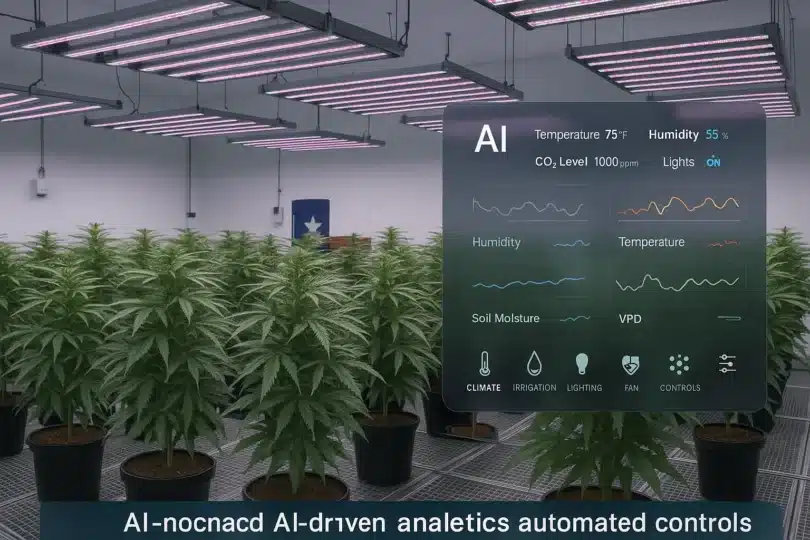Cannabis cultivation is entering a new frontier with the rise of AI-powered grow systems that promise sharper yields, predictive analytics, and personalized strain recommendations. A recent feature by Calispace & Flyt spotlights how growers are deploying sensor networks, machine learning models, and smart greenhouse controls—from seed to sale—all designed to optimize every stage of the cultivation cycle.
At the core are sensor-equipped grow rooms that continuously measure temperature, humidity, CO₂, and light. AI models process these data to fine-tune light spectrums, irrigation schedules, and nutrient mixes, leading to reduced waste and improved flower consistency. Some platforms even incorporate computer vision to detect pests, identify mold, and track plant development—with automated alerts sent to growers in real time.
This AI integration is backed by booming market momentum. According to a recent report from Research & Markets, the global cannabis cultivation market is projected to surge from $180.7 billion in 2025 to $651.8 billion by 2034, growing at a 15.3% CAGR, with technology adoption cited as a major catalyst.
For cultivators—from boutique operators to industrial farms—the benefits are compelling. AI-driven systems reduce labor needs, minimize human error, and ensure repeatable plant quality. Growers report 10–20% yield improvements, lower energy costs through optimized HVAC and lighting control, and faster identification of issues before they spiral into crop-wide losses.
Cultivation experts praise the shift but caution against tech overreach. Some believe that while sensors and algorithms can’t replace skilled growers, AI could assist by augmenting the human touch, not replace it… Additionally, integration costs and data training needs remain barriers, particularly for small-scale or legacy growers.
Nonetheless, the trend aligns with broader precision agriculture innovations spreading within cannabis production. Techniques such as “veg-in-place” propagation, under-canopy lighting, and automated environmental control are converging—accelerating the sophistication of modern grows.
Investors and vendors are taking note. Agtech startups are partnering with major cannabis companies to roll out pilot projects in Canada, Europe, and the U.S., focusing on strain-specific algorithms and regional climate adaptation. The goal? Cultivation systems that not only grow plants—but tailor them to consumer preferences and regulatory standards.
Looking ahead, AI may soon enable predictive strain selection, integrating market signals (e.g., terpene demand, consumer feedback) with agronomic data to suggest optimal breeding paths. This could usher in a future where growth is digitally mapped from seed genetics to consumer shelf—with full traceability baked in.
Source: Calispace & Flyt







